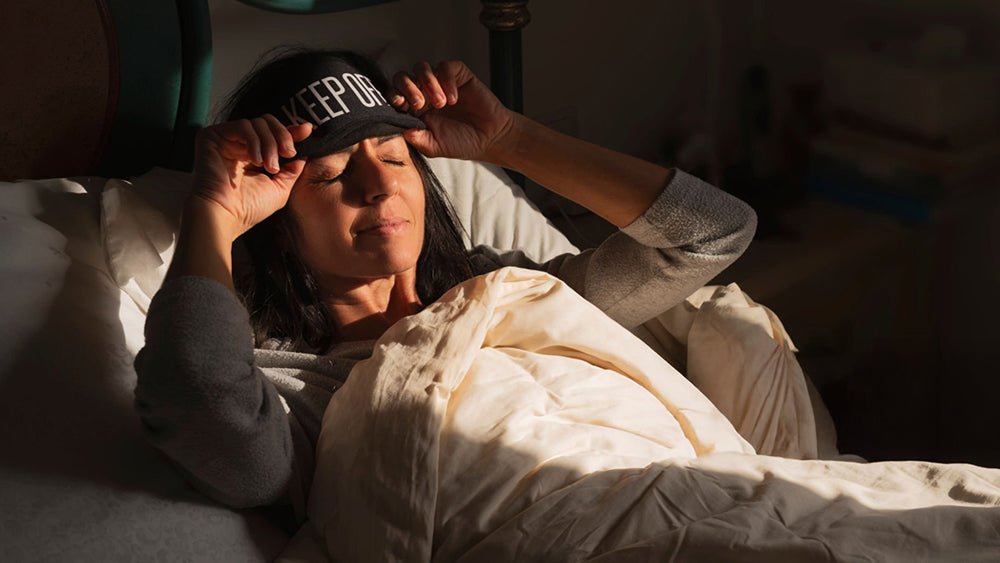Everyone needs sleep to stay healthy, but countless individuals still find it hard to drift off to sleep or remain asleep for most of the night. While your diet and stress levels are important, one major reason that gets overlooked is the surrounding light and, more specifically, what color night light is best for sleeping, that type of light you come in contact with prior to and during bedtime.
In this article, we’ll dive deeper into what color light is best for sleep, how light interacts with the natural cycles of your body, and what needs to be done to effectively manage lighting to promote sleep.

How Light Affects Sleep
Our body runs on a 24-hour clock, scientifically known as the circadian rhythm. This rhythm is largely regulated by how much light there is. When light enters your eyeballs, for example, it sends a signal to your brain to either suppress or produce the sleep hormone, melatonin. Blue light has an even stronger influence on melatonin suppression.
Many modern LED bulbs, alongside screens such as laptops, tablets, and even phones, emit blue light. If you get exposed to anything containing blue light in the evenings, your brain will automatically assume it is still daytime. This, in turn, will decrease the quality and delay sleep. Melatonin is suppressed more by blue light than by green light, as green light allows more natural light exposure. Blue light also causes greater suppression and significantly shifts the circadian rhythm.
A study by Harvard Medical School found that blue light exposure suppresses melatonin twice as much as green light and significantly shifts the circadian rhythm.
Best and Worst Light Colors for Sleep
The light surrounding you can help or hinder sleep. It has to do with the hue and type of light. The good news is that some colors can soothe the mind and help your body sleep better. Let's find out what helps and what hinders your rest.
Best Colors for Sleep
Some colors can help your operational pole shift and calm your neurological center. These colors help maintain rhythm and melatonin balance, which is highly important during sleep. Below we'll explore hues claimed to optimize healing sleep.
Red Light
Softer light aids in preparing the body for sleep and rest, with red light being the most effective for promoting rest. Mimics sunset and has soothing effects.
Amber or Orange Light
More stimulating than red light, but not too harsh. Suitable for soft atmospheric lighting, especially in the evening.
Warm White Light
Used for the evening and is better in bedrooms and living rooms. Softer “warm white” light at 2700K emits less blue light than daylight bulbs.
According to a study in 2012 by Chronobiology International, athletes exposed to red light every evening for thirty minutes enjoy increased melatonin levels and sleep quality.

Worst Colors for Sleep
Everyday devices inadvertently get in the way of sleep-inducing rest by emitting some of the most disruptive colors. Disruptive colors can also be seen in everyday light fixtures. While some light hues can promote rest, others will staunch the throttle making falling asleep a challenge.
Blue Light
- As pointed out, blue light is the worst for your sleep.
- One encounters these blue lights through screens of devices and daylight LEDs.
Daylight LEDs
These lights mimic daylight and may be stimulating, which is OK during the day but is not suitable before bedtime.
Green Light
Even if green does not have the same stimulating properties as blue, it can still inhibit the release of melatonin and accelerate the internal clock.
How to Use Light to Improve Your Sleep Quality
Night lights are very helpful to children or anyone who wakes up at night. Nevertheless, an incorrect color may interfere with the sleep cycle. For a sleeping night light, red or amber is the most appropriate color. The reason is that they permit visibility while facilitating the inhibition of melatonin.

Why Are Red Night Lights Best
At sunset, red light mimics natural light and soothes the circadian cycles. This is the reason why red is at the low end of the spectrum hence, it would have a minimum effect, and it would help the body to realize that rest is at hand.
In addition to its brightness, light also influences time, color, shape, and position. After you follow these steps, the light will be in your favor while sleeping.
Avoid All Screens/Blue Lights for an Hour Before Sleeping
- All devices should be switched off at least one hour before going to bed.
- If exposure to blue light is unavoidable, the use of filters and such applications as Night Shift will be of great assistance.
Employ Warm Tone Bulbs at Night
- After sunset, red or amber light can be used.
- The bedroom and bathroom should have low-lumen light bulbs. Any bulbs with luminosity below 100 lumens will be effective and support sleep-wake cycles.
- Exposure to the Sun
- Natural sunny light should be absorbed deeply during mornings for a good cycle of sleep.
- Walking and other activities in the early evening can effectively help the person sleep toward the end of the day.
- It is Advisable to Use Dimmer Switches
- Reducing light slows down the active body processes and prepares it for sleep. Evenings around the light are low.
ComiLED Solutions for Better Nighttime Lighting
In relation to fostering an environment for relaxing sleep, lighting, especially in the evenings, serves an important function. During evening times, harsh or excessive light interferes with melatonin production, making it difficult for the body to unwind. This is why smart, adaptable lighting solutions such as ComiLED 4-Inch Recessed Lighting are necessary.
ComiLED have designed this fixture with sleep-friendly features. There’s a dual-mode system that also functions as a soothing 2000K night light. Warm amber glow in night mode illuminates the room like a candle, mimicking light, enhancing melatonin secretion, and reducing eye and brain strain during the late hours.
Adjustable color temperatures of 2700K to 5000K allow users to set the ambiance of the room according to the time of day. With the reading, relaxation, and bedtime modes, the smooth dimming feature enables users to achieve their intended light level at all times and during each moment.
Recommendation of Best-selling Products:
ComiLED 2x4 LED Flat Panel Light 6-Pack
ComiLED 6 Inch Black Smart Recessed Lighting 12-Pack

More Tips to Improve Your Sleep Environment
In addition to lighting, here are further sleep tips:
- Blackout curtains are effective in completely blocking external light.
- The ventilation of the room should be cool, and the ideal temperature to sleep is between 60 and 67 degrees Fahrenheit or 16 and 19 degrees Celsius.
- Both alcohol and caffeine should be avoided prior to sleep as they are strong stimulants.
- body clock of a person must be maintained consistently and shouldn't differ on weekends.
- If required, sound disturbance can be eliminated through the use of earplugs and white noise generators.
Final Thoughts
The sleep patterns of individuals may change drastically due to the effect of colored light. Evidence shows that softly tinted red and amber colors encourage sleep while blue and white light disrupts melatonin production and sleep, preventing people from having a sound sleep.
The natural body clock of a person can be sharply tuned by using strategically timed calendar cues, adjusting deadlines, and leveraging hints during key periods, such as 30-60 minutes before intended bedtime.
FAQ:
What color light is most effective for waking someone up?
For optimal wakefulness and alertness, exposure to bright blue or cool white light in the morning is ideal. It increases serotonin concentrations while suppressing melatonin, making one feel awake and energized.
What color has relaxing properties?
When relaxing or easing into a stressful situation, the body must be brought to a state of ease. All of these can be attributed to relaxing red and amber.
Does smart lighting actually help someone sleep better?
Yes. Smart lighting can reinforce a healthy circadian rhythm. They can use dark and warm tones in the evening, and bright, cool colors during the morning, which overall improves sleep quality.
Read more:
Are Blue Eyes More Sensitive to Light?
A Complete Guide about What is LED Light 2025






Partager:
How Long Do LED Light Bulbs Last?
How to Change a Light Switch?